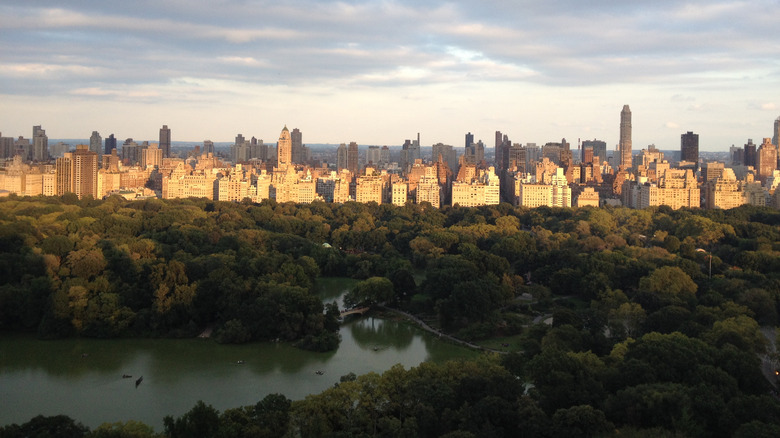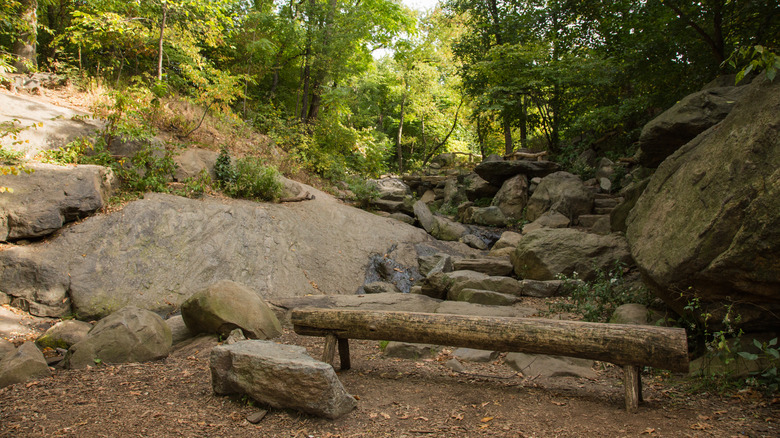Everything You Need To Know About The Hidden Cave In Central Park
Central Park has been a well-known fixture of New York City ever since its official opening in 1876 (via Britannica). The vast park offers New Yorkers a natural escape from the concrete jungle they are otherwise constantly surrounded by. Among other features, it houses an ancient Egyptian obelisk, lamp posts with secret codes, species of animal previously unknown to science, waterfalls, and even the small opening to a cave. Known as Ramble Cave for the forested "Ramble" section of the park where it is located, the cave entrance can be easily missed by visitors.
While its origin as a natural vs. built formation is debated, it already existed before the park's construction. Hidden among rocks and vegetation, the cave's entrance is small but was eventually given a carved stairway descending deeper into the rock, which led to a larger chamber inside. As one can imagine, such a fixture had been the sight of more than a few trysts and heinous crimes until it was eventually sealed (via Messy Nessy Chic).
Ramble cave was a popular spot for crime
Ramble cave was a very secluded spot and was a source of adventure and secrecy for visitors wanting to have extra fun or privacy. Unfortunately, those qualities meant that it was also the sight for less than wholesome activities (via Mental Floss). A common location for runaways to conceal themselves, the cave was also where a number of people chose to end their own lives. In other instances, it was used as a convenient location for depositing the remains of murder victims.
More frequently though it was where crimes such as harassment and assault occurred; more than 330 men were arrested after using the cave for such actions in 1929 alone (via Atlas Obscura). So great was the threat of crime and mischief being committed inside the cave that, in 1934, the city opted to completely close the entrance with brick. The stairway is still accessible today and while the interior isn't, what is left still offers some sense of seclusion for those who find it (via Untapped New York).

